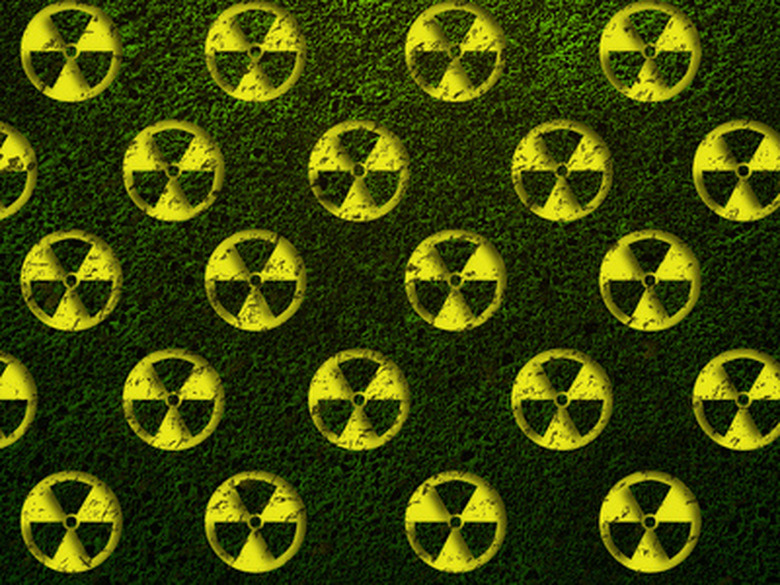The Effects Of Nuclear Radiation On The Environment
You have likely heard some scary things about nuclear radiation effects and how they can impact human health. Though nuclear power plants produce very little pollution when compared to fossil fuels, they certainly do not come without their risks – just ask anyone affected by the Chernobyl nuclear disaster. Though nuclear power itself has its pros and cons, it's also important to ask, "How does nuclear radiation affect the environment?"
Why Is Radiation Bad?
Why Is Radiation Bad?
You have to look into what exactly radiation does to living things to get a better idea of why radiation is considered bad. The most damaging of nuclear radiation effects involves DNA. Energy from the radiation damages the DNA, or genetic material, within the cell. The body can repair damage from small amounts of radiation, but large amounts can result in cell death and even cancer.
Some harmful effects of radiation on humans and animals include:
- Burns
- Nausea and vomiting (acute radiation syndrome)
- Cancer or increased risk of cancer
- Cardiovascular disease
How Does Nuclear Radiation Affect the Environment?
How Does Nuclear Radiation Affect the Environment?
Nuclear radiation can impact the environment in three primary ways: improper disposal of nuclear waste, direct exposure via disasters and through the mining process of uranium.
While nuclear power plants do not emit very much pollution, they do produce radioactive waste as a byproduct. Some plants dispose of nuclear waste – particularly waste with lower levels of radiation than is harmful to human health – using landfills or by releasing it into lakes and rivers. Unknown leaks of nuclear wastes can also find their way into the environment, as can damage to permanent underground housing facilities for nuclear waste.
Disasters provide a similar danger to the environment and surrounding ecosystems, simply on a larger and more destructive scale. Accidents can happen, and the impact of an accident and a nuclear power plant can catastrophic consequences to human health and the environment. Disasters can directly expose those in the vicinity to high levels of radiation; wind and water can carry radiation long distances, and radiation can remain in the soil for many years.
Nuclear power requires the use of uranium, which companies must mine from the ground to obtain. Uranium mining provides its own slew of environmental impacts. Some facilities dispose of the byproducts of uranium mining, known as tailings, in the surrounding area of the mine. These not only expose the area to radiation, which can spread through the air or leach into the water, but also pose the risk of heavy metal contamination as well.
Radioactive Effects of Nuclear Disasters
Radioactive Effects of Nuclear Disasters
The disaster at Chernobyl provided researchers with an example of how nuclear radiation affects the environment after a large-scale meltdown. Plants and animals within the affected area take up radioactive particles, and these move through the ecosystem through bioaccumulation.
Radiation pollution within waterways also accumulates within fish and other aquatic organisms, and runoff from radiation within the soil provides additional contamination. Even today, over 35 years later, some waterways outside of the exclusion zone remain "closed" to fishing due to radiation exposure.
Plants and animals within approximately 20 miles of the nuclear power plant at Chernobyl received high levels of radiation. Wildlife within this region saw an increase in overall mortality as well as a decrease in reproductive success. Genetic anomalies and deformities also occurred due to the DNA damage associated with exposure to radiation.
Interestingly enough, in recent years the exclusion zone in the 20-mile radius surrounding the disaster site has become quite biodiverse with plant and animal life. As the mortality and reproductive impacts of the radiation have declined, the lack of human activity has allowed the ecosystem to thrive in the absence of urbanization and agriculture.
References
- United States Environmental Protection Agency: Radiation Health Effects
- New York State Department of Environmental Conservation: Assessment of the Risks to Fish and Wildlife From Exposure to Ionizing Radiation
- World Nuclear Association: Nuclear Radiation and Health Effects
- United States Energy Information Administration: Nuclear Explained
- Spring Power and Gas: The Pros and Cons of Nuclear Energy: Is It Safe?
- Stanford University: The Health and Environmental Impact of Uranium Mining
- Green Facts: Chernobyl Nuclear Accident
Cite This Article
MLA
Zinni, Yasmin. "The Effects Of Nuclear Radiation On The Environment" sciencing.com, https://www.sciencing.com/the-effects-of-nuclear-radiation-on-the-environment-13428111/. 20 October 2021.
APA
Zinni, Yasmin. (2021, October 20). The Effects Of Nuclear Radiation On The Environment. sciencing.com. Retrieved from https://www.sciencing.com/the-effects-of-nuclear-radiation-on-the-environment-13428111/
Chicago
Zinni, Yasmin. The Effects Of Nuclear Radiation On The Environment last modified August 30, 2022. https://www.sciencing.com/the-effects-of-nuclear-radiation-on-the-environment-13428111/
